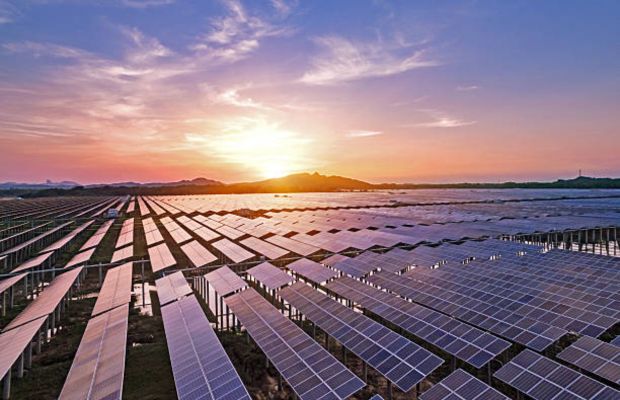Renewables capacity in the Middle East is set to soar in the coming years, with green energy sources outpacing fossil fuel usage in the power sector by 2040, according to Rystad Energy’s latest research. Solar photovoltaic (PV) is expected to emerge as the predominant source, accounting for more than half of the region’s power supply by the middle of the century, up from 2% last year.
By 2050, renewable energy sources, including hydro in addition to solar and wind, are expected to constitute a staggering 70% of the Middle East’s power generation mix. This marks a monumental leap from the mere 5% recorded at the end of 2023, signaling a transformative shift in the region’s energy landscape. Despite the coming surge of clean energy installations, the region will continue to rely heavily on natural gas in the short term, and usage will continue to grow until it peaks around 2030.
The Rystad Energy Report also pointed out that the Middle East‘s energy sector is at a turning point. Although traditionally an oil and gas powerhouse, the region is shifting its focus to renewables as a response to rapid industrial growth, increasing population, and a global drive to reduce carbon emissions. The region is home to over 280 million people and has one of the world’s fastest-growing populations, increasing by over 60% since 2000. This has led to a rapid increase in power demand, more than doubling in the past 20 years.
As population growth continues, the region’s economic outlook strengthens, forecasts Rystad Energy report. By 2050, power demand will reach about 2,000 terawatt-hours (TWh), compared to the current 1,200 TWh, due to strong industrial development, population growth, and the electrification of transport and other sectors. The region’s residential sector currently accounts for 40% of total power demand, followed by the commercial sector at 26% and the industrial sector at 22%. The remaining 12% includes sectors such as agriculture and transport.
The Middle East’s power generation is heavily reliant on fossil fuels, making up 93% of the total at the end of 2023. Renewables accounted for 3% and nuclear and hydro for 2% each. Natural gas power represented almost three-quarters of the region’s electricity generation, making up 40% of the overall gas demand. By 2030, some 30% of the region’s installed capacity is expected to come from renewable energy sources, with the potential to rise to 75% by 2050.
Battery energy storage is expected to grow significantly in the 2030s, supporting the intermittency of solar and wind power and aiding in a smooth energy transition. Because of a relative lack of hydropower potential and low gas prices, the Middle East will continue to use gas-fired power as a primary source and eventually as a transitional fuel in the long term. The share of gas in the power generation mix is anticipated to shrink from 74% at the end of 2023 to 46% in 2040 and 22% by 2050.
“The Middle East trails behind in the renewable energy shift, overshadowed by Asia and Africa where renewable power is expected to surpass fossil fuel generation by 2032. Renewable power generation has outpaced fossil fuel usage in Europe since 2019. With nearly 40% of its power consumed by a growing residential sector, the Middle East faces surging power demand. This, coupled with the need for economic diversification and freshwater through desalination, underscores the urgency for a transition to renewables. Additionally, the anticipated rise in electric vehicles in the long term hints at a future spike in energy demand, making the shift towards renewable sources not just necessary but inevitable for the region’s long-term sustainability,” says Nishant Kumar, renewables and power analyst at Rystad Energy.
Solar energy is becoming increasingly important in the energy policies of Middle Eastern countries. As the cheapest energy source, solar PV in Saudi Arabia is at a world record-low levelized cost of electricity (LCOE) – an economic metric to assess and compare lifetime costs of generating power across different energy sources – of $10.4 per megawatt-hour (MWh). This is due to factors such as low hurdle rates, large-scale projects, declining hardware prices, low labor costs, and high solar irradiance. In fact, the region has exceptional solar energy potential, receiving more than 2,000 kilowatt-hours (kWh) per square meter annually in solar irradiation in countries such as Saudi Arabia, the UAE, and Oman.
The total solar capacity in the Middle East at the end of 2023 exceeded 16 gigawatts (GW) and is expected to approach 23 GW by the end of 2024. Projections indicate that by 2030, the capacity will surpass 100 GW, with green hydrogen projects contributing to an annual growth rate of 30%. Saudi Arabia, the UAE, Oman, and Israel are on track to collectively account for nearly two-thirds of the region’s total solar capacity by the end of the decade.


